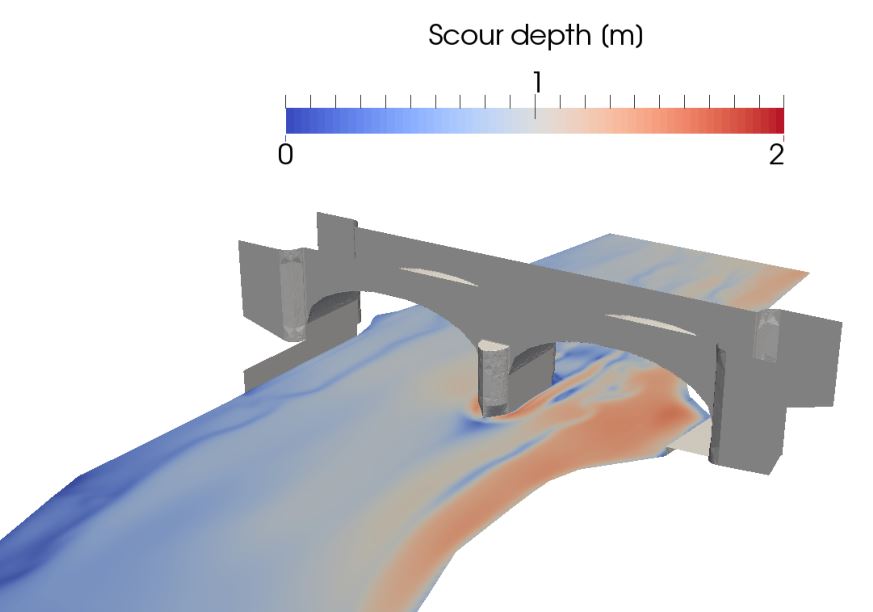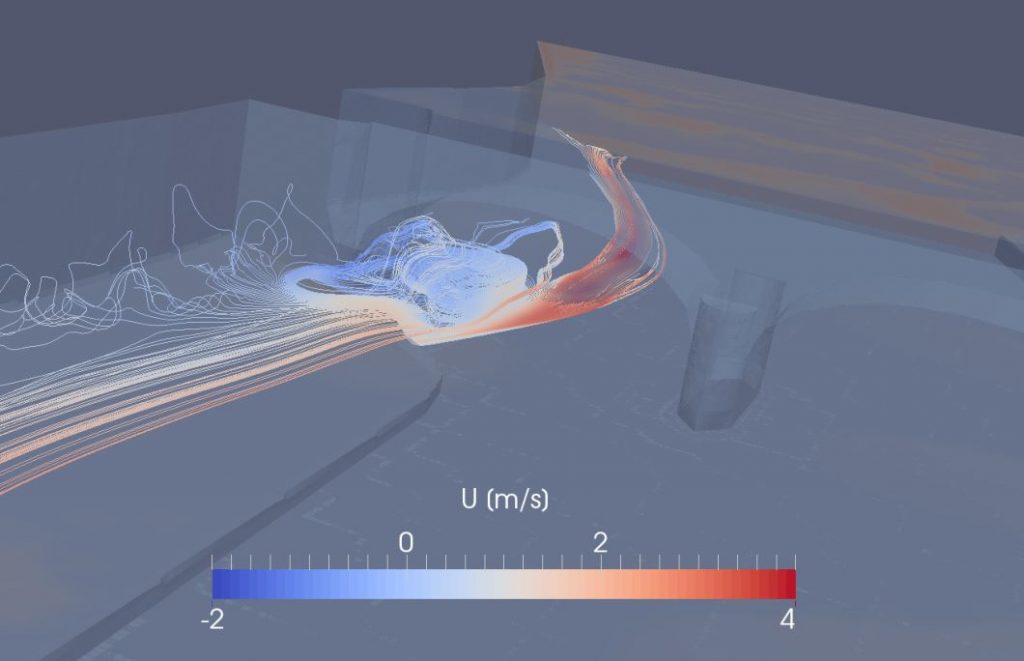This phase will focus on the application of CFD to predict hydrodynamic effects of debris blockage for a broad range of bridges. We will evaluate computationally the two main hydrodynamic effects on a bridge, namely scour and pressures. Two distinct approaches to modelling scour will be investigated and later compared for their effectiveness. Results from the flume experiments in Phase 1 will be used to test and validate the CFD models. Accuracy and computational costs of the two distinct approaches for scour prediction and modelling will be assessed to determine the most suitable approach for the next stage of the project.
Scour depths will be empirically related to flow velocities near piers or abutments based on results from the scour modelling approach identified as the most suitable for scour prediction. We will then use full scale CFD simulations to predict debris effects for a diverse set of debris and bridge scenarios. This research will is interested in mainly evaluating the interactions between model parameters such as bridge span and pier width that largely determine the two quantities of interest – flow velocities and pressures. Results from the CFD models, which will include flow velocities around piers and abutments, and pressure distributions on the bridge superstructure, will be compiled for use in Phase 3.
In the following results from a sample CFD simulation (using OpenFOAM) is shown.
In the following simulated scour maps for a two-span arch bridge is shown.
And a looking upstream view of flow streamlines:



